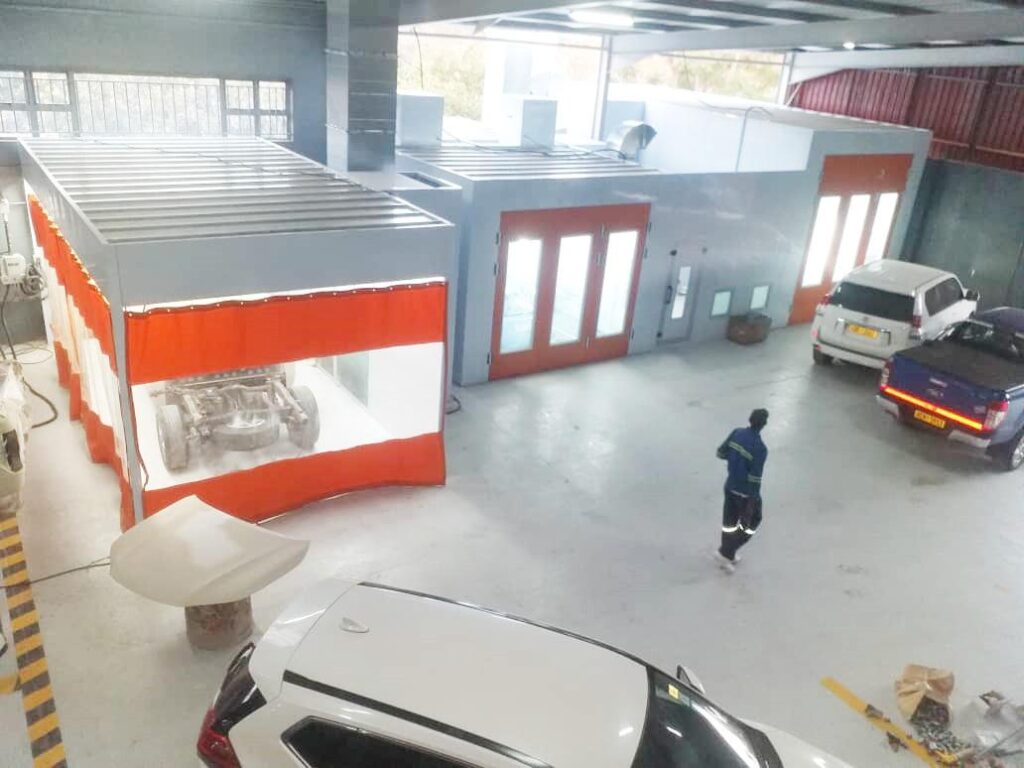Mastering Spray Booth Cleaning: Proven Techniques for Peak Performance
To achieve a spotless and efficient spray booth, begin by eliminating all potential sources of dirt, followed by a thorough inspection of every interior surface. Prior to commencing the cleaning process, it is crucial to power down all fans and equipment to ensure safety. Utilise appropriate solvents, vacuums, or pressure washers to effectively cleanse the walls, floors, and filters. Regular upkeep of the exhaust systems is essential, alongside managing moisture levels and replacing filters every three months to guarantee optimal airflow while enhancing the quality of your finishes.

Maintaining a pristine spray booth is vital for achieving exceptional finishes, reducing the frequency of costly reworks, and extending the lifespan of your equipment. A clean booth facilitates improved airflow, diminishes the risk of contamination, and ensures adherence to critical safety and environmental standards. By prioritising cleanliness, you significantly enhance the overall efficiency of your operations, resulting in higher quality outputs and greater productivity. This commitment to hygiene not only optimises workflow but also instills confidence in the quality of your products.
Whether you manage a crossdraft booth or a sophisticated side draft system, implementing and following consistent cleaning protocols is essential for maintaining optimal booth maintenance and ensuring superior performance.
The Critical Importance of Regular Spray Booth Cleaning for Quality Assurance
The accumulation of dirt, overspray, and moisture can drastically affect the quality of finishes, hinder operational efficiency, and endanger the safety of your spray operations. Establishing a routine maintenance schedule ensures that your booth operates at its highest efficiency while safeguarding your investment in spray booth technology. By maintaining a clean spray booth, you preserve the integrity of your work and create a reliable and safe working environment, which is vital for successful operations.
Key advantages of adhering to regular cleaning practices include:
- Enhanced coating consistency across all finished products, ensuring uniform quality.
- Reduced frequency of costly reworks due to defects in finishes, saving time and resources.
- Extended lifespan of filters and duct systems, which lowers replacement costs significantly.
- Safer working environments for all personnel involved in the spray processes, enhancing overall workplace safety.
- Improved energy efficiency and stabilised airflow, leading to better operational performance.
Your Comprehensive Guide to Efficiently Cleaning Your Spray Booth
Adopt Proactive Measures to Reduce Dust Accumulation
Effective booth maintenance begins with proactive strategies aimed at minimising dust accumulation. It is essential to keep all unnecessary equipment, parts, and materials outside the booth at all times to limit potential contamination. Furthermore, refrain from conducting any sanding or preparation of parts within the spray booth; all sanding and bodywork should be completed beforehand to prevent dust from infiltrating the cleaning area. This proactive approach not only aids in maintaining cleanliness but also protects the quality of your finishes and the overall efficiency of your operations.
Incorporating tack coatings or static-reducing wall liners can effectively trap airborne particles, contributing to cleaner interior surfaces and significantly enhancing operational conditions within the booth, which in turn can improve product quality.
Perform a Thorough Inspection of the Booth's Interior Prior to Cleaning
Before initiating the cleaning process, it is crucial to carry out a meticulous inspection of the booth's interior. Pay particular attention to corners, seams, lighting frames, intake plenum areas, and around exhaust ducts. Look for signs of overspray accumulation, dust buildup, or any signs of corrosion or damage. Take note of any areas requiring extra attention during the cleaning process to ensure that nothing is overlooked, thereby making your cleaning efforts as effective as possible.
Ensure Safe Isolation of the Booth and Deactivate All Equipment
Before commencing the cleaning process, ensure that all power supplies to the booth are turned off. This includes deactivating ventilation fans, lighting systems, and any automated spray arms that may be present. Close all grates, dampers, and air vents to prevent contamination from affecting other areas during the cleaning operation, thereby ensuring a safe and effective cleaning experience that protects both staff and equipment.
Meticulously Clean All Internal Surfaces of the Booth for Optimal Outcomes
Begin the cleaning process from the highest points and work your way downwards to avoid re-contaminating areas that have already been cleaned. You may choose to utilise one or more of the following effective cleaning methods:
- Industrial vacuum: Use this powerful tool to efficiently extract dry dust and debris. Exercise caution and avoid using standard vacuums around any combustible materials for safety.
- Solvent-based mop: Utilise a spray booth-safe solvent to effectively break down and eliminate dried paint from walls and floors, ensuring a comprehensive clean.
- Pressure washer: This method is particularly effective for removing heavy overspray from non-electrical surfaces with minimal effort and maximum efficiency.
- Non-sparking broom and lint-free cloth: These tools are especially critical in volatile zones where solvents and vapours may be present, ensuring safety throughout the cleaning process.
Ensure that any solvent used is compatible with the booth’s wall coating to prevent damage. Avoid using generic cleaners that may leave residues or adversely affect surface linings, which could compromise the quality of your work and lead to unsatisfactory finishes.
Consistently Clean Spray Equipment and Filters to Maintain Peak Performance
It is vital to understand that overspray and airborne dust do not remain confined to the booth walls; they can also affect your spray equipment. Regularly clean your spray guns, hose connectors, floor grates, intake plenums, and exhaust fans. A blocked exhaust or a saturated filter can severely restrict airflow, leading to increased pressure buildup and compromised spray quality. Routine cleaning helps maintain the efficiency and longevity of your equipment, ultimately enhancing your productivity.
If any filters have surpassed their recommended service life, replace them immediately to ensure optimal performance. High-quality replacement filters can be sourced from our dedicated Spray Booth Filters page, ensuring that your equipment operates smoothly and effectively.
Proactively Manage Moisture Control Within the Booth to Prevent Complications
Moisture poses a significant risk factor in spray booths, particularly when utilising compressed air systems. Regularly monitor for condensation on ductwork, walls, and spray lines to mitigate risks associated with moisture. It is advisable to install desiccant dryers and moisture separators at critical junctions to effectively manage moisture levels. Following the cleaning process, ensure that the booth is thoroughly dried to prevent the growth of mould and rust, which can lead to extensive damage and costly repairs.
Essential Cleaning Frequency Checklist for Maximising Efficiency in Your Spray Booth
| Task | Frequency | Recommendation |
|---|---|---|
| Remove dust from floors and walls | Daily |  Highly Recommended Highly Recommended |
| Wipe down overspray areas | After each spray job |  Essential Essential |
| Clean spray equipment | Weekly |  Highly Advised Highly Advised |
| Clean or inspect exhaust system | Monthly |  Routine Check Routine Check |
| Deep clean and filter replacement | Every 3 months |  Based on Usage Based on Usage |
The Article: Cleaning a Spray Booth: Your Professional Maintenance Guide first appeared on https://writebuff.com
The Article Spray Booth Cleaning: Essential Maintenance Tips for Pros Was Found On https://limitsofstrategy.com

